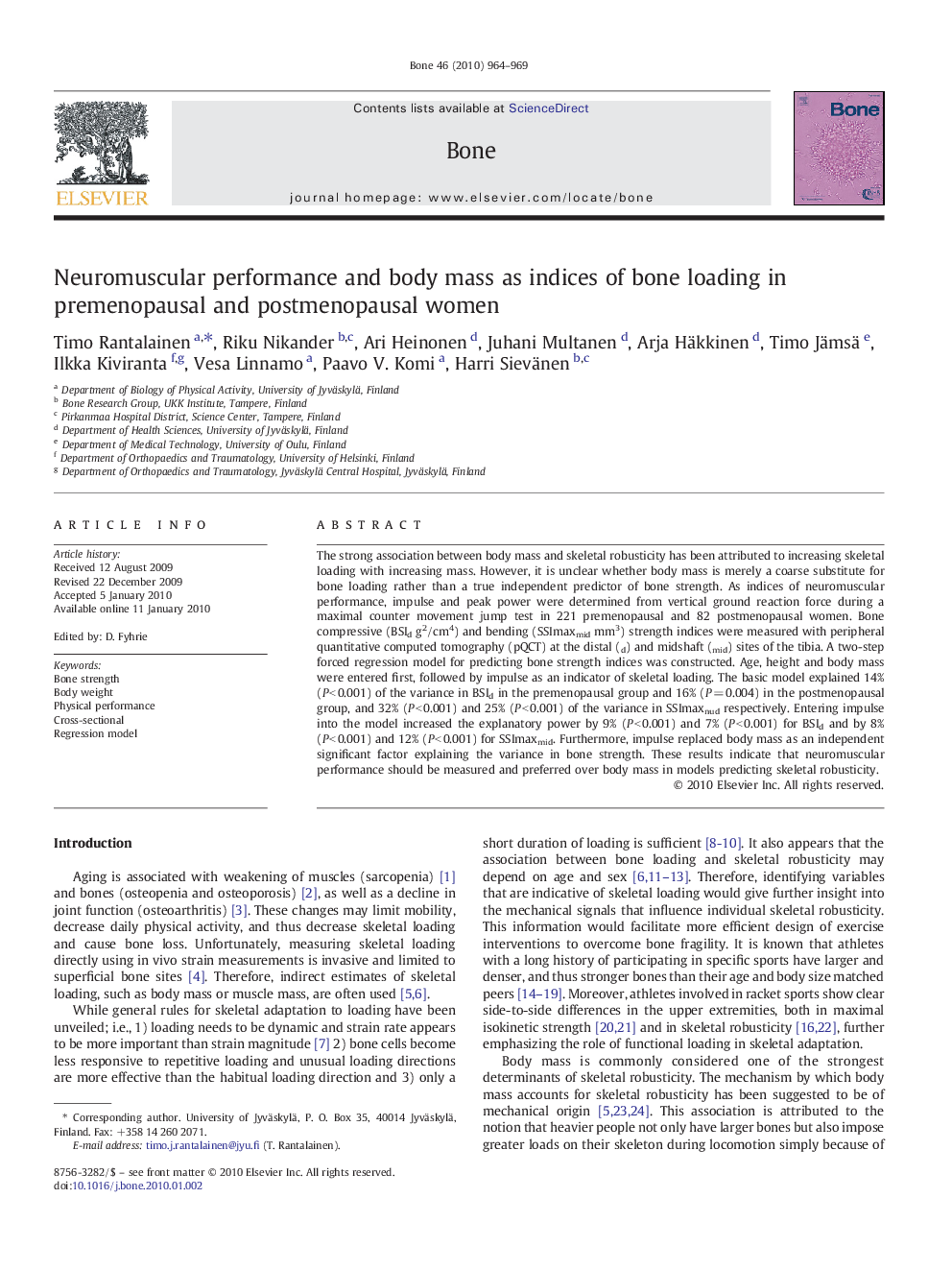| Article ID | Journal | Published Year | Pages | File Type |
|---|---|---|---|---|
| 2781088 | Bone | 2010 | 6 Pages |
Abstract
The strong association between body mass and skeletal robusticity has been attributed to increasing skeletal loading with increasing mass. However, it is unclear whether body mass is merely a coarse substitute for bone loading rather than a true independent predictor of bone strength. As indices of neuromuscular performance, impulse and peak power were determined from vertical ground reaction force during a maximal counter movement jump test in 221 premenopausal and 82 postmenopausal women. Bone compressive (BSId g2/cm4) and bending (SSImaxmid mm3) strength indices were measured with peripheral quantitative computed tomography (pQCT) at the distal (d) and midshaft (mid) sites of the tibia. A two-step forced regression model for predicting bone strength indices was constructed. Age, height and body mass were entered first, followed by impulse as an indicator of skeletal loading. The basic model explained 14% (PÂ <Â 0.001) of the variance in BSId in the premenopausal group and 16% (PÂ =Â 0.004) in the postmenopausal group, and 32% (PÂ <Â 0.001) and 25% (PÂ <Â 0.001) of the variance in SSImaxnud respectively. Entering impulse into the model increased the explanatory power by 9% (PÂ <Â 0.001) and 7% (PÂ <Â 0.001) for BSId and by 8% (PÂ <Â 0.001) and 12% (PÂ <Â 0.001) for SSImaxmid. Furthermore, impulse replaced body mass as an independent significant factor explaining the variance in bone strength. These results indicate that neuromuscular performance should be measured and preferred over body mass in models predicting skeletal robusticity.
Related Topics
Life Sciences
Biochemistry, Genetics and Molecular Biology
Developmental Biology
Authors
Timo Rantalainen, Riku Nikander, Ari Heinonen, Juhani Multanen, Arja Häkkinen, Timo Jämsä, Ilkka Kiviranta, Vesa Linnamo, Paavo V. Komi, Harri Sievänen,
